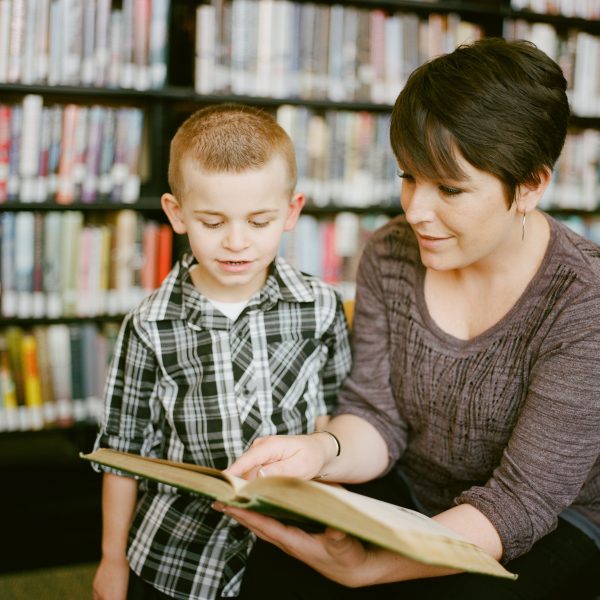Practically perfect placement: everything you need to know to make your placement shine

Completing placement hours for an early childhood education and care (ECEC) qualification, whether it’s for Certificate III, Diploma or even an Early Childhood Teaching Degree, can be confronting.
You’re often in a new place, with children and educators you haven’t worked with before, and on top of that, you have the worry of not getting your regular pay, coupled with needing to complete assignments and placement tasks.
In some cases, placement hours may be the first time you’ve set foot in an ECEC setting, and the environment, with all its joyful laughter and busy movement may seem overwhelming.
There’s parents to talk to, children to work with, colleagues to get to know, and a whole new set of routines and expectations to understand. Never fear though! With this guide, you’ll be supported with all the tools you need to make your placement practically perfect.
What is placement?
Placement hours are a requirement of the Certificate III in Children’s Services, the Diploma of Early Childhood and the Bachelor of Early Childhood Education. They are mandated blocks of time that must be spent working with children of various age groups in order to gain a qualification.
While learning can come from time spent in direct instruction with a trainer, placement hours build on this learning and allow students to put their learning into practice.
Typically placement hours are unpaid, and must be completed in a service other than your own, however in some instances it’s possible to complete placement hours in a role you already have. Ask your tertiary education provider for more information to see if this is an option for you.
Finding a placement
Some tertiary institutions will support their learners to secure a placement, while others expect the students to source their own placement opportunities.
Many ECEC services pre-book students for placement, and in the currently challenging workforce environment, some services may decline to host a placement student because of the extra workload this entails.
It’s best to plan well in advance of the proposed time for placement, and to continue checking in with the service periodically to make sure that nothing has changed.
The best way to secure a placement is to phone or email services in your area, or in an area you would be willing to travel to, and ask if they are taking placement students for the dates you need.
Some services will say “we don’t take placement students” while others will say “not for the dates you want” or you may simply not hear back.
It’s important to not be discouraged by this, it is not a reflection of your worth as a prospective educator – keep trying and you will find a space.
Getting ready for placement
Once placement details have been finalised, it’s a good idea to book a visit with the service so that you’re familiar with the layout, and also any key policies you need to be aware of before interacting with children and families.
Make sure you have all your relevant paperwork ready to go, particularly working with children clearances. Many services like it when a placement student shares a brief summary about themselves, so that families know who the new face in the service is.
These summaries often cover things like:
- Your name
- The period you will be working at the service
- What course you are undertaking and the qualification you will attain upon completion
- Where you are studying
- A short description of yourself
- What has motivated you to pursue a career in ECEC.
It’s showtime! Here’s what to do during placement
Once placement begins, you’re one of the team, and should be supported and mentored accordingly.
No one expects you to know everything, so please speak up if there’s something you need help with. That being said, remember that educators are there to work with children and families, and while they want you to be successful, they also have jobs they need to do.
Try to show initiative – if something spills, clean it up. If a phone is ringing and can’t be attended to, pick it up. If a child needs help to tie their shoes or reach a toy, ask them if they would like your help.
Bring in some of your favourite stories or resources, and ask for a suitable time to engage with the children. Don’t be shy, ask if you can sit with a room leader while she phones a parent, or if you can watch along when an incident report is completed – after all, you are there to learn.
Some students will complain about their placement experience, saying they feel like “all they did was clean”.
While there is a lot of cleaning involved in a typical educator’s day in order to meet the strict hygiene standards needed under the National Laws, there should also be sufficient time for you to complete any tasks and/or assignments that you may have.
At some time during your placement, an assessor from your institution will likely visit or digitally call in to assess how you perform your practical tasks.
Tips for success
Here are some tips to help you get the most out of your placement experience
- Stay positive
Every day might not be good, but there will be something good in every day. Having a positive attitude to your placement, being polite and making an effort to get to know others will go a long way. Take a genuine interest in the things you see happening around you, smile and ask questions.
- Appearance
Working in ECEC can be messy! Despite this, it’s not a good idea to wear clothes that are stained or have holes in them, or to wear anything too revealing. Some services have rules about what can and cannot be worn (for example, no leggings) while others will have a uniform.
Be sure to follow any prescribed dress code and pay attention to presenting in a professional manner. For safety, it’s best to keep long hair tied back, and to wear closed toed shoes. If you have any tattoos with content that is inappropriate for children, consider how to cover them, and remove any piercings that children may pull.
- Be on time
Try to arrive at the service ten minutes before your scheduled start time so that you have time to put your things away, take a walk around the service, and catch up on any information you need to have a successful shift.
If you’re running late, or too sick to come into placement, let the service leader know.
- Know the rules, and stick to them
Each service will have health and safety rules that are covered as part of the National Law. These policies are there for good reasons, and protect the children you’re working with. Other policies – such as not being alone with a child, or following evacuation procedures – are for your safety also.
Be sure to follow the guidance of the mentors and others in the service to ensure best practice.
When placement is over
Aside from all the academic obligations from your training provider, make sure you take some time at the end of your placement to discuss your performance during placement with the staff member who supervised you.
Ask them for suggestions on how you could improve, feedback on what you did well, and for any other insights. If you’re open to working for the service as a casual or in a more permanent position, this is a good time to let them know.
For more information about how to have a good placement experience, please see here.
Popular

Quality
Practice
Provider
Research
Workforce
Honouring the quiet magic of early childhood
2025-07-11 09:15:00
by Fiona Alston

Workforce
Policy
Quality
Practice
Provider
Research
The silent oath: Why child protection is personal for every educator
2025-07-17 09:00:31
by Fiona Alston

Practice
Provider
Quality
Research
Embedding cultural safety and responsiveness to strengthen belonging in early childhood education
2025-07-14 13:21:23
by Contributed Content











